
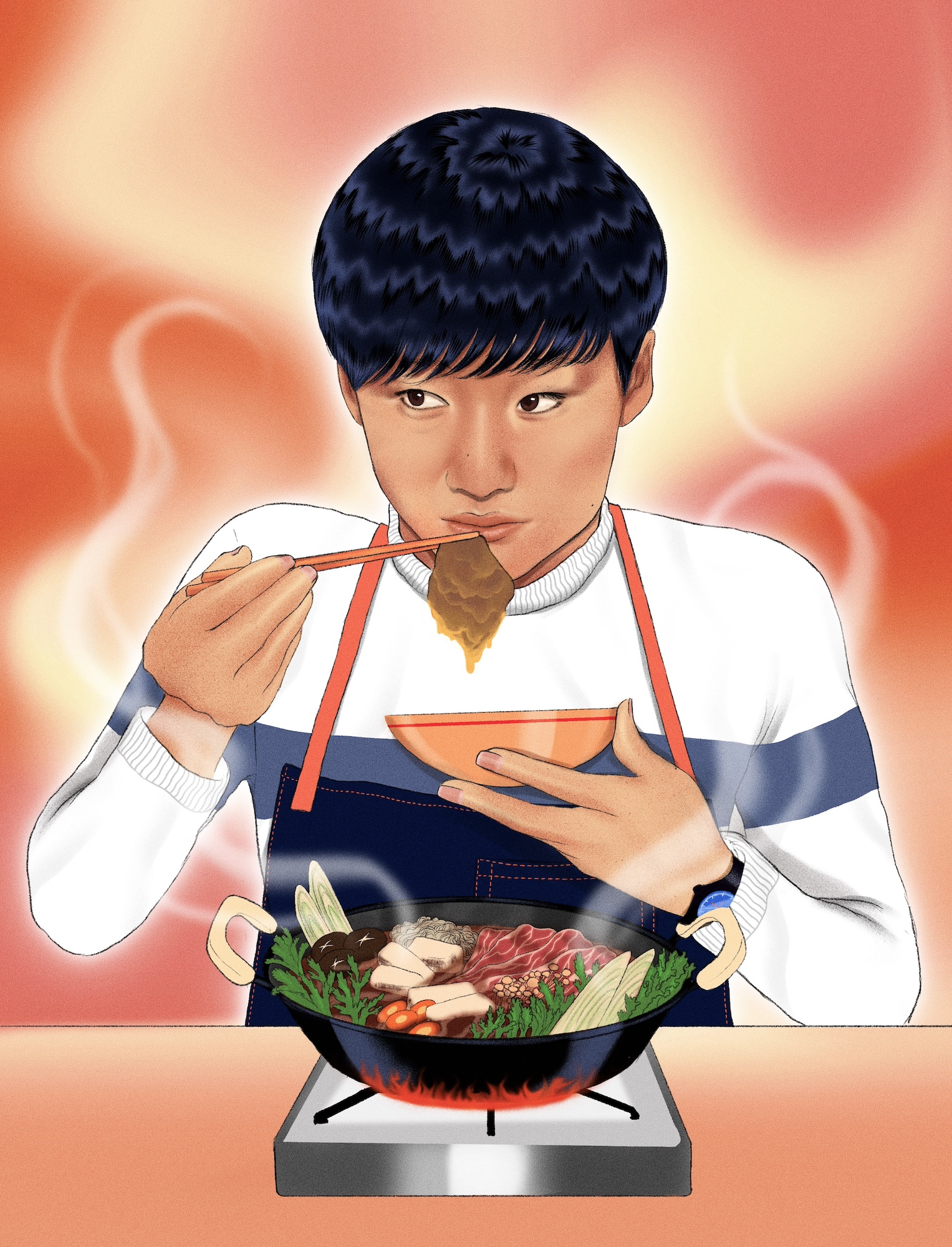
The magic of Japanese curry lies in its simplicity; a handful of ingredients cooked mindfully becomes infused with flavor and character. It’s more than just a meal — it’s nostalgia in a bowl. Every Japanese person has a curry story, a distinct memory steeped with warmth and familiarity. For me, it was watching my grandmother hunched over the stove, patiently stirring a bubbling pot, the rich aroma greeting me after a long journey from the United Kingdom to Japan. For a young Yuki Tsunoda, VCARB driver and Japan’s hottest Formula 1 prospect, it was the beef curry his mother would cook for him every night before a race.
“That was kind of the routine,” Yuki remembers. “Curries were definitely my choice.”
This winter, during a break while training in the United Arab Emirates, I ask the 24-year-old racer, wearing a black t-shirt with a silver necklace poking through the collar, about his journey into food. “To be completely honest, I started getting interested in food recently, around four years ago,” he confesses. “When I was younger I loved food already, but I was actually quite picky.” It wasn’t until his career sent the Japanese driver around the world that he found his culinary wanderlust.
At 18, Yuki left his home in Sagamihara, a city just south of Tokyo, and moved to Switzerland. He’d won the Japanese FIA F4 championship and was headed to Europe to race in F3 and the Euro Formula Open Championship. Having never lived abroad, Yuki felt a certain trepidation mixed with the excitement of it all. “Even now I look very, very young — almost like a baby — but at 18 years old, I was literally baby-faced,” Yuki says. “I didn’t have enough confidence to go out by myself to eat at a restaurant.”
So, he decided to cook every meal — breakfast, lunch, and dinner. He didn’t look up recipes or watch YouTube tutorials; he just tried to remember how his mother had done it. “I didn’t even ask my mom,” Yuki says. “I just imagined and cooked.”
The results surprised him: the food tasted great. “I started to have confidence and, as usual with myself, as soon as things went well, my ego went very high,” he continues, smiling. “I’m like ‘Okay, maybe I have a talent!’”
In 2021, Yuki earned a seat for Scuderia AlphaTauri, becoming the first Japanese driver in Formula 1 since 2014, when Kamui Kobayashi raced for Caterham. As Yuki’s Formula 1 career accelerated, time in the kitchen became a luxury. He moved from the UK to Italy that year, and his perspective on food took a turn. “In the Formula 1 environment, I had a lot of stressful and frustrating moments, and I didn’t have many tools to escape from the frustration,” he says. “I didn’t think about how important it was to reset myself as soon as possible for the next race.” Then he made a discovery: Italian food could be more than just fuel. It could be a means to recenter. “When I had a nice meal or a nice wine, I just felt amazing,” he says. “Even the day after, I would be thinking about the meal I ate the night before.”
The experiences played a key role in expanding and refining his palate. They also deepened his appreciation for the cuisine of his homeland, Japan. No one eats better than those lucky enough to travel on the Formula 1 circuit, but despite having tasted some of the finest Italian cuisine, Yuki can’t resist telling his Italian friends that his home country’s pizza and pasta can match theirs blow for blow. "Some is actually better than in Italy," he says, f lashing his signature grin. “I’m not kidding!” He tells me of the Japanese chefs that have been beating Italian pizza makers in worldwide competitions, and raves about the quality of the pizza dough and his love for toppings such as sakuraebi (桜エビ, sakura shrimp) or maguro tataki (マグロたたき, minced tuna) that bring a Japanese twist. “It’s crazy good.”
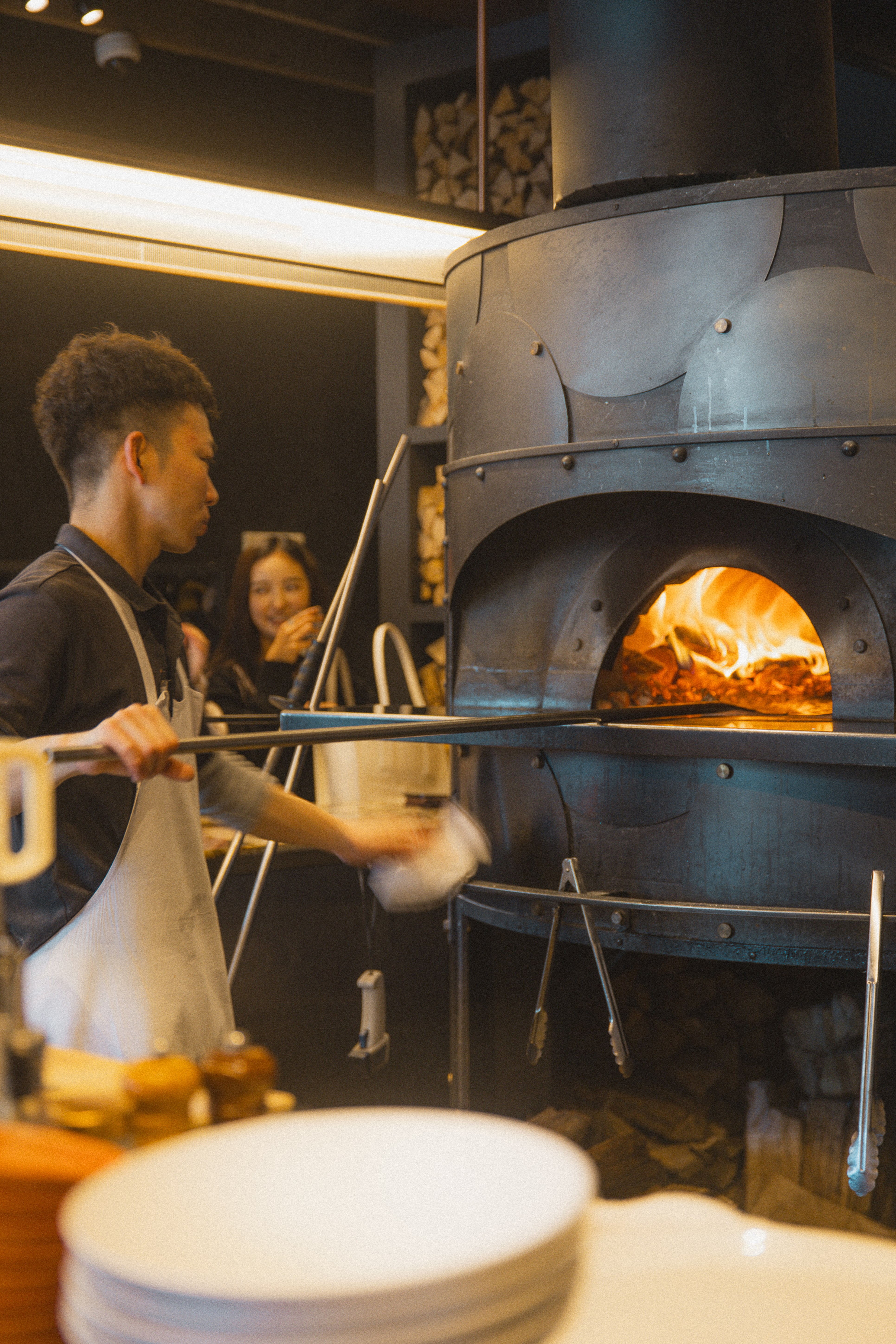
Pizza Marumo, located in the Ebisu neighborhood of Tokyo.
Growing up, my father, once a chef himself, taught me the basics of cooking, but it wasn’t until I left the UK for Japan at 22 that I felt an interest turn into a vocation. I explored the island nation, and studied under countless chefs, including an unforgettable stint in a Michelin-starred French kitchen, where I witnessed and absorbed a profound respect for ingredients, customers, and discipline.
Travel sparked something for Yuki, as well. It took leaving Japan to truly grasp its beauty. “I started to grow a deeper understanding and love for Japanese food,” he explains. His favorite dish not cooked by his mother? Motsunabe (もつ鍋), a hot pot with motsu (もつ, beef or pork offal) and vegetables such garlic, chives, and spring cabbage simmered in a rich, umami-packed broth and served with rice or noodles. He admits it is salty and fatty, but at least every food group is covered: “vegetables, protein, and carbohydrates,” Yuki says. “You can have a whole dinner in just one pot.”
So, when he’s back in town, he always makes a point to order the motsunabe from his favorite spot Senpuku Sushi, located in the countryside near where Yuki grew up. “The owner and his son have supported my racing, and it is the place I always go with my family,” he tells me. “When I eat motsunabe there, I feel like I have come back home.”
I go to visit Takeshi Fukui, the owner of the 53-year-old restaurant, to learn more about what goes into making Yuki’s favorite motsunabe. He tells me the delicately soft yet so satisfyingly chewy motsu — Takeshi uses beef intestine — is sourced fresh from a family friend. Then, there’s the broth, steeped in deep flavors of garlic and soy sauce, light yet profoundly rich. To finish, rice or ramen noodles are added so you can savor every drop. It’s simple ingredients, done well, and remarkably addictive.
As Yuki tells me more about motsunabe, I hear his tone shift. There’s something about this humble yet deeply considered dish that strikes a chord with him, something that embodies the very soul of Japanese cuisine and culture. “In my opinion, what makes Japanese food special is the respect for the ingredients and their natural taste,” he says. The flavor of the fish, the beef, or the vegetable isn’t masked in heavy sauces or seasoning. “And we try to use as much of each ingredient as possible out of respect, because we are taking their life from them.”
While Yuki may not spend as much time in Japan these days, he cherishes every opportunity to reconnect with his roots. Nothing brings the simplicity of the time before his life became public than sharing a meal with family and friends.
But as much as Yuki cherishes that down-home comfort, he’s also developed a growing appreciation for more sophisticated dining experiences. When I ask him to name one of his favorite Tokyo restaurants, I sense a reticence. He’s silent for a moment, a rarity during our hour-long conversation. “I don’t want to make it famous!” he finally confesses with a playful grin.
But with a little gentle prying, Yuki finally relents. His favorite sukiyaki restaurant? Seryna Honten, in Tokyo’s most opulent and upmarket area, Roppongi. Close by in the affluent Nishiazabu neighborhood lies his goto soba spot, Osoba no Kouga.
But he saves his favorite restaurant for last: “Kushikatsu Bon Ginza.”
From the outside, the unassuming restaurant in the heart of Tokyo’s renowned Ginza district seems ordinary. But inside, the sleek elegant counter, the soft glow of warm lighting, and the shimmering copper deep fryer make you realize that this restaurant named for its most famous dish is delivering the extraordinary.
A simple yet beloved offering from Osaka, kushikatsu (串カツ) consists of breaded and deep-fried proteins or vegetables served on a skewer. Traditionally favored by blue-collar workers, its roots lie far from the world of high-end fine dining.
Manager and chef Nagasawa Takeshi embodies the Japanese concept of Shun (旬), which celebrates ingredients at their seasonal peak. Using delicacies, like wagyu beef, sea urchin, and the finest tuna, his kushikatsu focuses on bringing out the natural flavors of each component. Takeshi also takes extra care with the skewer’s coating. Fine breadcrumbs are used for the perfect crispness, while a blend of lard and cottonseed oil creates a light, clean fry that doesn’t overwhelm the ingredients’ natural flavor. The result is a skewer that’s not only incredibly delicious but also easy to eat. Each bite leaves you wanting more.
The respect for ingredients and tradition is woven into Japanese culture, a philosophy that extends beyond just food. It’s one of the things that keeps Yuki coming back to kushikatsu, and to the food all throughout his home country. He’s noticed that in most of Europe, people say bon appétit before eating, wishing their fellow diners a good meal. “But we say Itadakimasu (いただきます) — more of an appreciation to the food, to the people who grow the ingredients, and to the animals,” Yuki says. “It’s a different approach.”
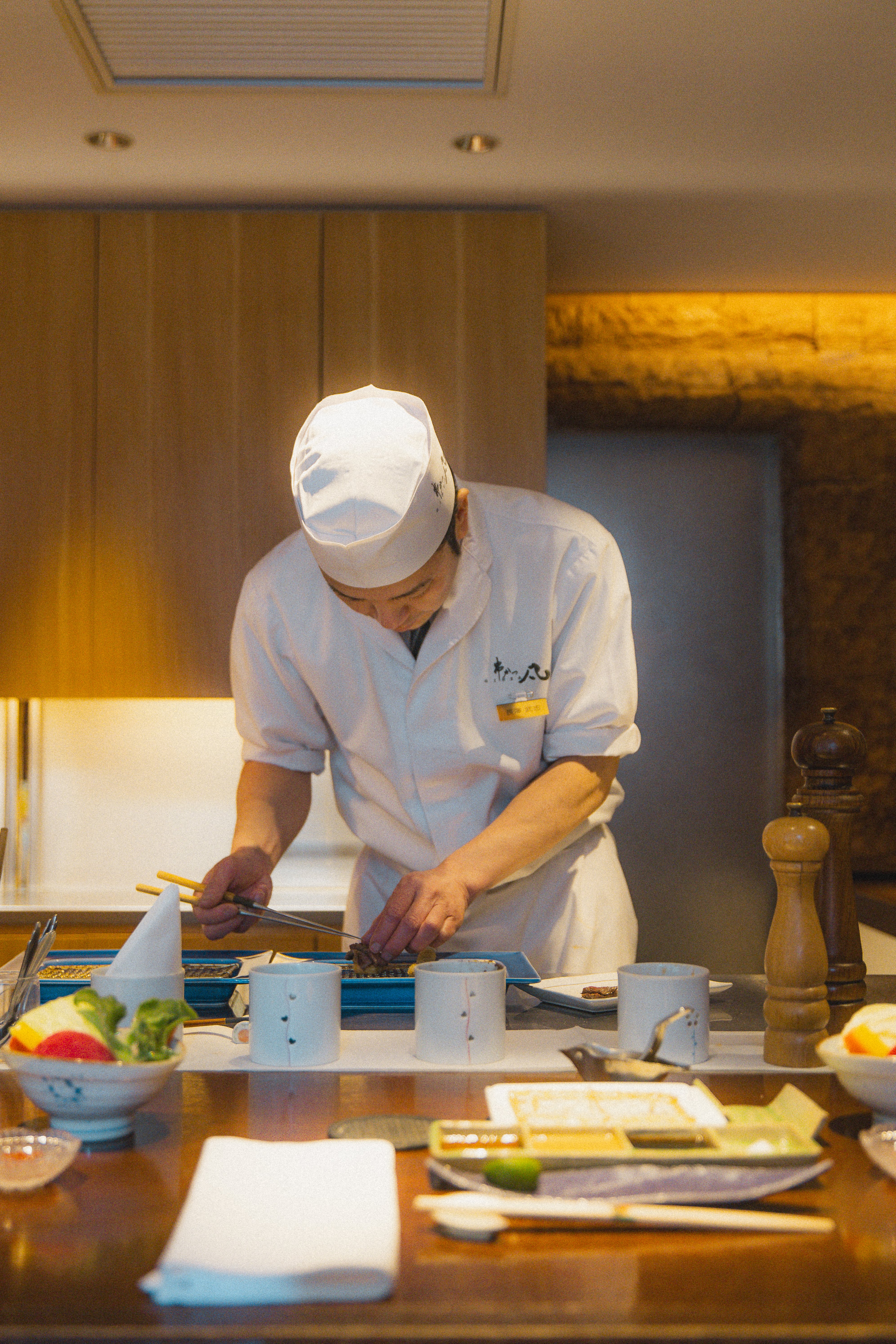
Chef Nagasawa Takeshi preparing food at Kushikatsu Bon Ginza
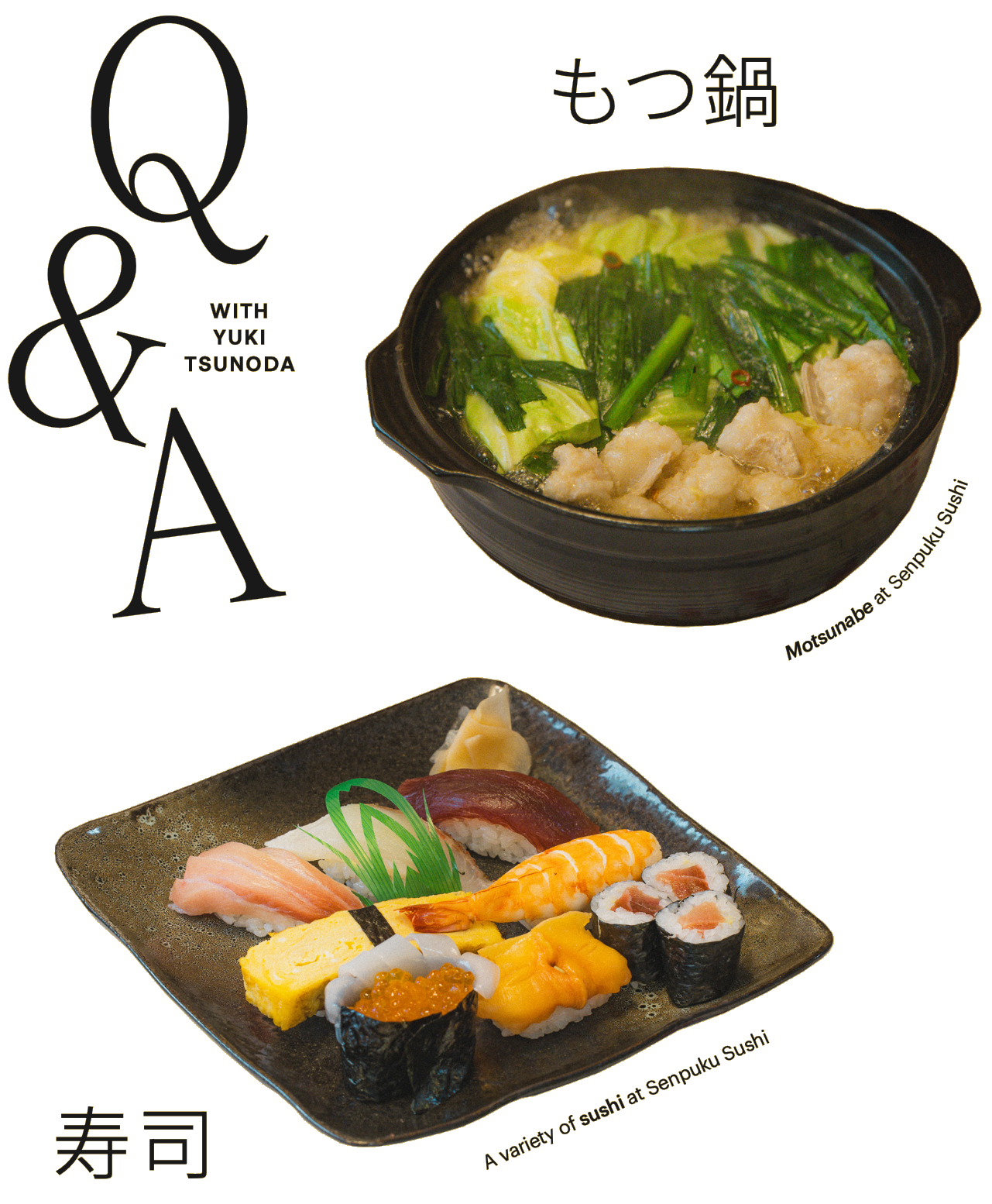
ANDY: We heard that your favorite dish is motsunabe. I didn’t love it the one time I ate it in Sapporo where I live. Any tips for your fans who want to find great motsunabe?
YUKI: It’s very important where you eat motsunabe. Sapporo is a place famous for the good quality of the ingredients there, especially fish. But motsunabe actually comes from the complete opposite side of Japan: Fukuoka, the largest city on Kyūshū [Japan’s southern island]. I’ve never went to Sapporo for it, but normally you want to eat it in Tokyo or Fukuoka — but Fukuoka is always the best. Even in Tokyo it is quite hard to find. Motsu can be very stinky if they use the wrong process when preparing those ingredients. It’s very difficult to make. But if you find a restaurant that is really good, it is just really amazing.
アンディ: 一番好きな料理はもつ鍋だと聞きましたが、私が住んでいる札幌で食べたもつ鍋は好みじゃなかったです。これからもつ鍋を食べてみたいと思っているファンへのアドバイスはありますか?
ユキ: もつ鍋をどこで食べるかがとても大切です。札幌は食材、特に魚の質が良いことで有名ですが、実はもつ鍋は札幌とは反対側の福岡が発祥地で、札幌では一度も食べたことがありません。普通、皆さんは東京か福岡で食べると思いますが、私は福岡が一番だと思っています。東京でさえ、なかなか美味しいお店を見つけるのは難しいです。作るのはとても難しく、もつは下ごしらえの仕方を間違えると、とても臭くなるので、作るのが難しいんです。でも、美味しいお店を見つけたら、驚くほど美味しいですよ。
ANDY: What’s the one meal you think people should definitely eat when visiting Tokyo?
YUKI: The meal that has consistently stayed my favorite is sukiyaki. It’s hard to find a wrong place. Obviously, at expensive restaurants, you probably get better meat quality, but the taste itself is quite similar. It’s hard to go wrong. But as I said, I got really curious about food at 19, after I’d moved to Europe, so I have to explore more in Tokyo. One place I went that I recommend is called Seryna Honten. The sukiyaki is good obviously but one dish that really stands out — you’ll be surprised — is broccoli. I’m not kidding! They have this amazing broccoli with mentaiko sauce. It’s like the best meal in the whole world. This broccoli is the best meal I ever had in my life!
アンディ: 東京を訪れたら絶対に食べるべきだと思う食事は何ですか?
ユキ: 一貫して私のお気に入りであり続けている食事はすき焼きです。すき焼きなら間違いないですね。もちろん、値段の高いお店に行けば、肉の質は良いですが、味そのものはどこもよく似ているので、すき焼きなら間違いないです。でも、さっきも言ったように、19歳でヨーロッパに渡ってから食べ物にすごく興味を持つようになったので、東京ではもっと探検しなきゃいけないです。行ったお店の中でお勧めなのは、「瀬里奈本店」というお店です。すき焼きが美味しいのは当然ですが、一品だけ本当に際立っているのがブロッコリーです。冗談じゃないですよ!ブロッコリーに明太子ソースがかかっているんです。世界で一番美味しい料理と言っても良いくらい、このブロッコリーは私の人生で最高の料理なんです。
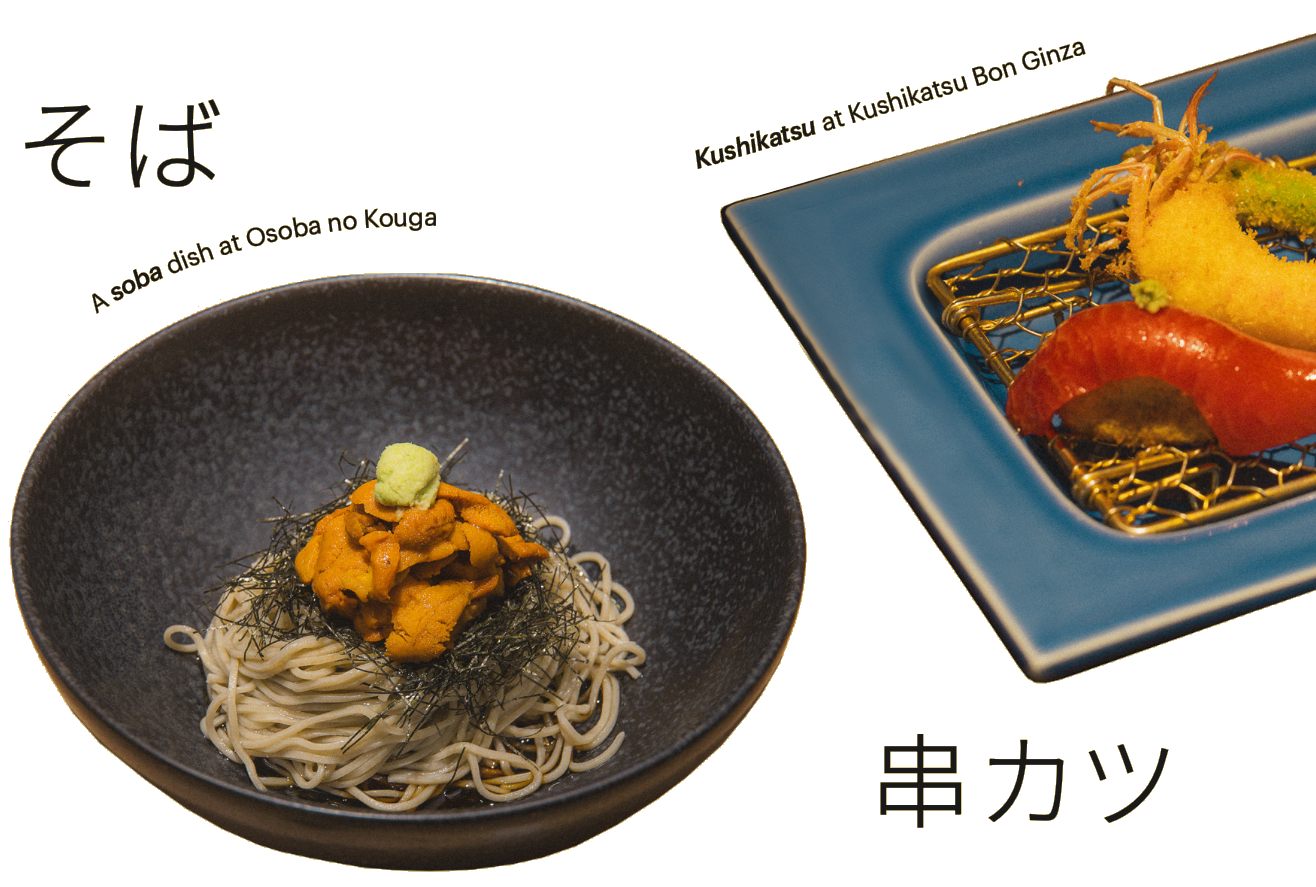
ANDY: Any other favorite Japanese dishes?
YUKI: I’d say sushi. The fish quality is completely different in Japan. I always get impressed with how different it is when I go back and eat sushi in Japan. The ramen is also completely different than in Europe. It looks easy to create, but it is really, really difficult. A lot of effort goes into it. Some restaurants take a long time, like more than 12 hours, to make their dashi. Ramen in Japan is at such a high level, especially in Tokyo.
アンディ: もつ鍋以外に好きな和食はありますか?
ユキ: 寿司かな。日本では魚の質が全然違います!日本に帰って寿司を食べると、その違いにいつも感動します。ラーメンもヨーロッパとはまったく違います。作るのは簡単そうに見えるけど、本当に難しいです。多くの手間がかかっています。出汁を取るのに12時間以上かかる店もあります。日本のラーメンはレベルが高く、特に東京は際立って高いと思います。
Although he is still in the early stages of his Formula 1 journey, Yuki has set sights beyond the racetrack. He dreams of opening his own restaurant. When I ask why, he smiles and simply says: “Passion.” That single word sits at the core of everything Yuki seems to stand for. From the moment he started speaking to me about food, his energy was infectious. Whether reminiscing about his mother’s homemade curry, his love for Italian cuisine and wine, or his deep respect for Japanese culinary traditions, it was clear food wasn’t just something he enjoyed. It’s a part of who Yuki is.
While he acknowledges the financial challenges of the restaurant industry, with its razor-thin margins and constant pressure, he’s undeterred. “I’m not really thinking about the profit, because I’m not expecting that. I want to focus more on the food quality, the service, and the atmosphere inside the restaurant,” he says. For him, this will be more than a business venture; it’ll serve as a reflection of the journey he’s been on, from his childhood in Japan to his travels around the world. A space built from memories, culture, and connections “that shows my personality.” Having the rare opportunity to travel the globe, Yuki is determined to bring those diverse experiences onto the plate. “The main thing is that it’s a place that people want to come back to even if they are living far away.”
When I ask when we could expect the opening of his restaurant, the mood shifts gears once again. He tells me when he first joined Formula 1, he was “crazy about food” and wanted to open his own place right away. “Obviously, I’m still very crazy with food,” he says, but he explains that he’s put the plans on the backburner until he realizes his dreams on the track.
“Racing is my life and I want to reach the level I know I can achieve,” he tells me.
“As soon as I achieve that, then I will start.”
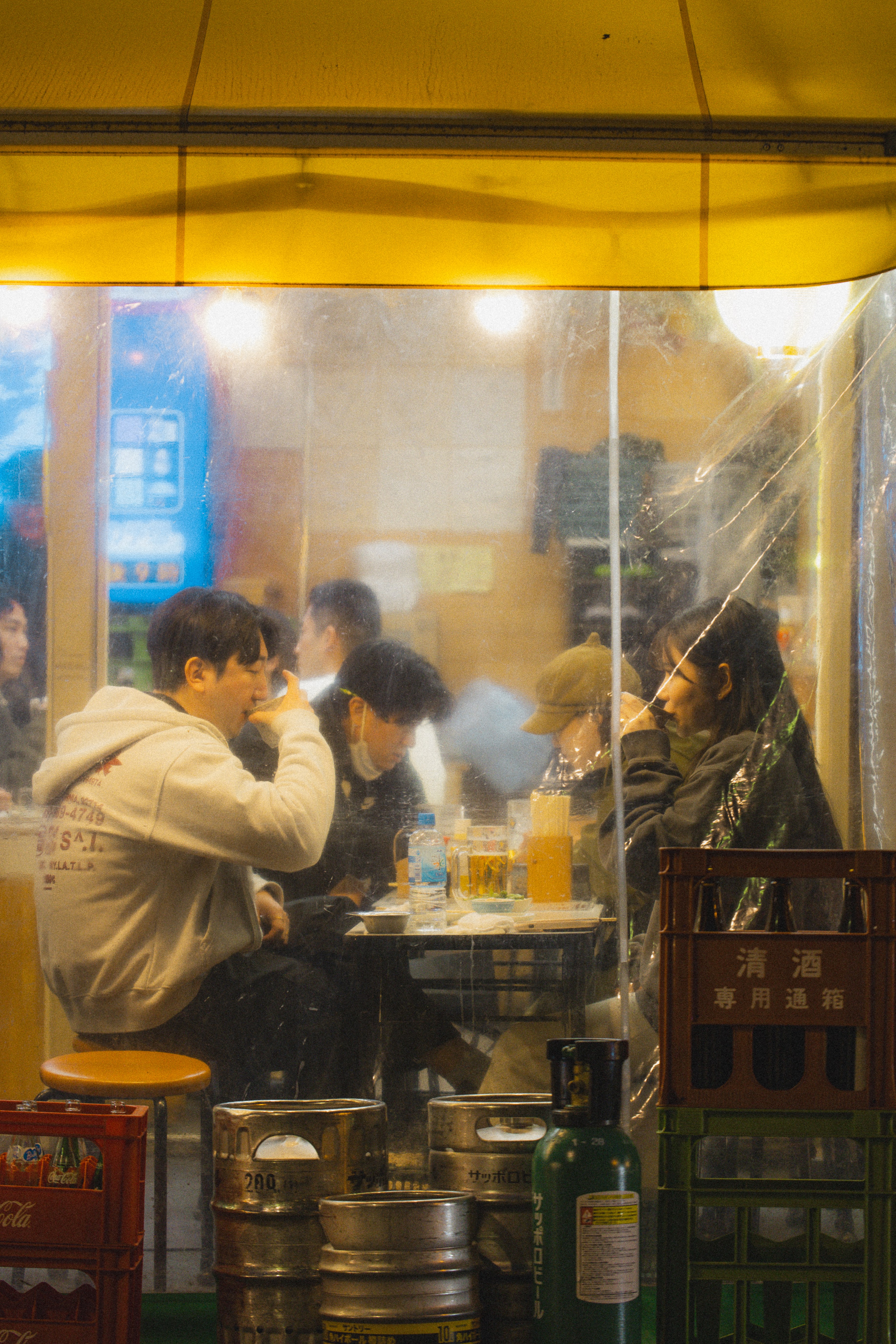
Tokyo’s eclectic culinary scene has everything from comforting street food and trendy coffee shops to decadent fine dining.